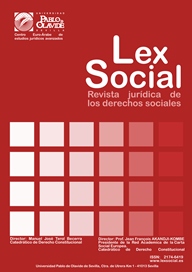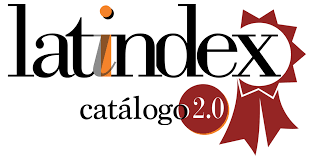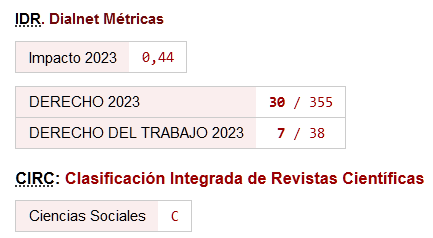Legal, technological and commercial scope of the first legislation on the internet of things
DOI:
https://doi.org/10.46661/lexsocial.4001Keywords:
Internet of things, legislation, California, privacy, cybersecurityAbstract
The Internet isn´t only a new means of communication, it´s becoming a layer of reality that intervenes in the different types of human relationships: commercial, affective, political, academic, labor and cultural. During the last decades it has evolved so quickly that it covers previously unimaginable aspects. Computers, printers, cell phones, tablets, smart TVs, lights, appliances and even the lock of the houses can be connected to the Internet and be operated remotely for the comfort of the consumer. But it also carries its risks, the Web isn´t and will not be 100 percent safe and people can be victims of all types of crimes. Consequently, it´s necessary to dictate rules that protect personal information and provide greater security in the management of devices connected to the Network.
The present work consists in defining and enumerating the necessary components for the functioning of the ecosystem called Internet of Things and analyze the California Law N ° 327 Information privacy: connected devices. To this end, this article has two parts: the first one, which delimits the conceptual-technological framework, provides examples of different technologies in everyday and business life and the second examines the different principles adopted in Law No. 327 Information privacy: connected devices, and at the same time presents its harshest criticism as well as the arguments in its defense.
Downloads
References
Casalet, M (2018) “La digitalización industrial: un camino hacia la gobernanza colaborativa. Estudios de casos”. Documentos de Proyectos (LC/TS.2018/95). Santiago, Chile: Comisión Económica para América Latina y el Caribe (CEPAL), pp. 7-9
Gallego Gómez, C. y de Pablos Heredero, C. (2016) “El impacto de un nuevo paradigma tecnológico-social: el Internet de las cosas y la capacidad de innovación.” Harvard Deusto Business Research Volumen V. Número 2, pp. 149-161.ISSN: 2254-6235.
Gartner (11 de noviembre de 2013) “Says Personal Worlds and the Internet of Everything Are Colliding to Create New Markets”. Gartner [Consultado el: 2/5/2017] Disponible en: http://www.gartner.com/newsroom/id/2621015
Gartner (7 de febrero de 2017) “Gartner says 8.4 billion connected ‘things’ will be in use in 2017, up 31 percent from 2016”. [Consultado el: 2/5/2017] Disponible en: https://www.gartner.com/newsroom/id/3598917
Graham, R. (10 de septiembre de 2018) “California's bad IoT law”. Errata Security. [Consultado el: 12/12/2018] Disponible en: https://blog.erratasec.com/2018/09/californias-bad-iot-law.html#.XBbQ-lwzbIV
Hawkins, D. (17 de septiembre de 2018) “The Cybersecurity 202: California's Internet of Things cybersecurity bill could lay groundwork for federal action” The Washington Post. [Consultado el: 14/12/2018] Disponible en: https://www.washingtonpost.com/news/powerpost/paloma/the-cybersecurity-202/2018/09/17/the-cybersecurity-202-california-s-internet-of-things-cybersecurity-bill-could-lay-groundwork-for-federal-action/5b9e6e331b326b47ec959638/?noredirect=on&utm_term=.22a787721195
Hu, K. (9 de agosto de 2018) “La necesidad de reformular la Internet de las cosas”. La Nación, sección opinión. [Consultado el: 15/11/2018] Disponible en: https://www.nacion.com/opinion/columnistas/la-necesidad-de-reformular-la-internet-de-las/UH5K2L7BIJA53NVC7W7CJV3LXA/story/
Jaimovich, D. (19 de septiembre de 2018) “Quién es el científico que lidera la revolución creativa de las máquinas” Infobae. Sección Tecno. [Consultado el: 12/11/2018] Disponible en: https://www.infobae.com/america/tecno/2018/09/19/quien-es-el-cientifico-que-lidera-la-revolucion-creativa-de-las-maquinas/
McKinsey & Company (2018) The Internet of Things: How to capture the value of IoT. [Consultado el: 2/12/2018] Disponible en: https://www.mckinsey.com/~/media/McKinsey/Business%20Functions/McKinsey%20Digital/Our%20Insights/The%20Internet%20of%20Things%20How%20to%20capture%20the%20value%20of%20IoT/How-to-capture-the-value-of-IoT.ashx
Perasso, V. (12 de octubre de 2016) “Qué es la cuarta revolución industrial (y por qué debería preocuparnos)” BBC Mundo. [Consultado el: 9/10/2018] Disponible en: http://www.bbc.com/mundo/noticias-37631834.
Poole, E. (2014) “El mundo nuevo de la tecnología ponible: ¿Qué consecuencias tiene para la propiedad intelectual (P.I.)?” Revista de la Organización Mundial de la Propiedad Intelectual. junio, número 3/2014.
Rayón, Á. (6 de diciembre del 2015) “Por qué hablamos del Business Analytics y no solo del Business Intelligence”. DeustoData. [Consultado el: 9/7/ 2018] Disponible en: https://blogs.deusto.es/bigdata/por-que-hablamos-del-business-analytics-y-no-solo-de-business-intelligence/
Robledo, J. (19 de septiembre de 2018) “Inteligencia artificial, eficiencia energética y diseño: cómo son los electrodomésticos de alta gama que LG traerá a la Argentina en 2019” Infobae. Sección Tecno. [Consultado el: 12/11/2018] Disponible en: https://www.infobae.com/tecno/2018/09/19/inteligencia-artificial-eficiencia-energetica-y-diseno-como-son-los-electrodomesticos-de-alta-gama-que-lg-traera-a-la-argentina-en-2019/
Salas, A. (2015) Los Hombres que Susurran a las Máquinas. España: Espasa
Tejero López, A. (2014) “Seguridad en el Internet de las Cosas. Retos y oportunidades detectadas”. Centro de Apoyo a la Innovación Tecnológica (CAIT), Universidad Politécnica de Madrid
Vecchione, M. (2018)” La tecnología para el bien – Un enfoque novedoso” ITUNews Magazine. Inteligencia Artificial para el Bien en el Mundo, pp.11-15
VV.AA. (2015) Internet de las Cosas (ed. Zennaro, M. y Pietrosemoli, E.) [Consultado el: 25/10/2018] Disponible en: http://www.nodo6.com/docu/InternetdelasCosas.pdf
VV.AA. (2016) Oportunidades y requerimientos para aprovechar el uso de Big Data para las estadísticas oficiales y los Objetivos de Desarrollo Sostenible en América Latina. Data-Pop Alliance.
Downloads
Published
How to Cite
Issue
Section
License
Copyright (c) 2019 Lex Social: Revista de Derechos Sociales

This work is licensed under a Creative Commons Attribution-NonCommercial-NoDerivatives 4.0 International License.
-
Atribución — Usted debe dar crédito de manera adecuada, brindar un enlace a la licencia, e indicar si se han realizado cambios. Puede hacerlo en cualquier forma razonable, pero no de forma tal que sugiera que usted o su uso tienen el apoyo de la licenciante.
-
NoComercial — Usted no puede hacer uso del material con propósitos comerciales.
-
CompartirIgual — Si remezcla, transforma o crea a partir del material, deberá difundir sus contribuciones bajo la misma licencia que el original.



 @Lex Social
@Lex Social Linkedin
Linkedin @lexrevista.bsky.social
@lexrevista.bsky.social


